"Spring Awakening." The last blow of the Reich
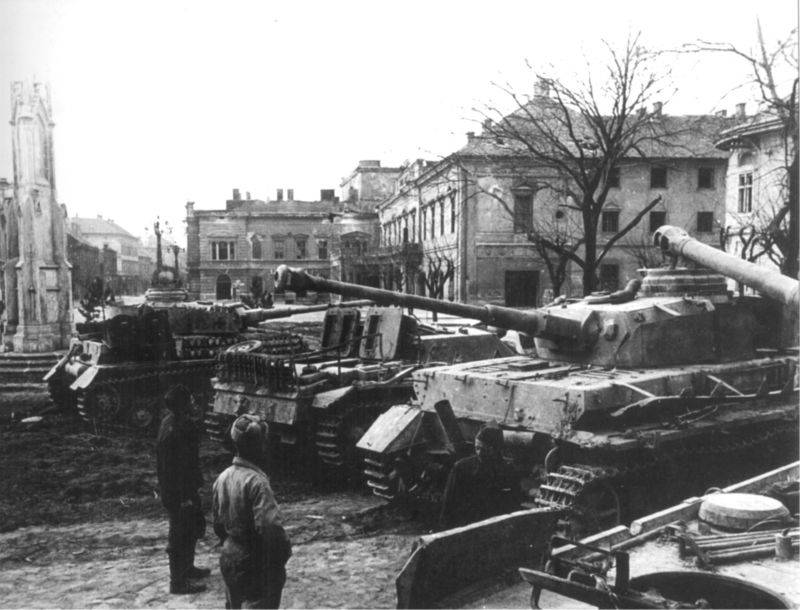
The Agony of the Third Reich. 75 years ago, on March 6, 1945, the Wehrmacht offensive began near Balaton. The last major offensive by the German army in World War II. The last defensive operation of the Soviet troops.
The situation before the operation
The offensive of the Red Army on the southern wing of the Soviet-German front led to the liberation of Southeast and Central Europe from the Nazis and local Nazis. The offensive operations of the 2nd, 3rd and 4th Ukrainian fronts (2nd, 3rd and 4th UV) in Hungary and Czechoslovakia pulled significant Wehrmacht forces from the main Berlin direction. Also, the Soviet army went to the southern borders of Germany.
On February 17, 1945, after the capture of the Hungarian capital, the Soviet Headquarters ordered the troops of the 2nd and 3rd UVs to launch an offensive in order to defeat the Army Group South and liberate the area of Bratislava, Brno and Vienna. The troops of the 2nd UV under the command of Rodion Malinovsky were supposed to conduct an offensive from the area north of Budapest to Bratislava and Vienna. The 3rd UV under the command of Fedor Tolbukhin was to launch an offensive from the area south of Budapest and north of Lake Balaton, bypassing the capital of Austria from the south. The operation was scheduled for March 15, 1945.
The troops of the 2nd UV stood north of the Danube, at the turn of the river Gron. In mid-February 1945, the Malinowski armies fought in the southeastern part of Czechoslovakia and occupied part of Slovakia. On February 17, the Wehrmacht attack group (1st SS Panzer Corps) dealt a strong blow to Shumilov’s 7th Guards Army. Soviet troops occupied a bridgehead on the west bank of the Gron River. During a fierce battle, our troops suffered heavy losses and were forced out onto the east bank of the river. The front command had to transfer additional forces to this sector to stabilize the situation. The German blow fended off. The troops of the 3rd UV and the 46th Army of the 2nd UV were fighting in the western part of Hungary at the turn east of Esztergom, Lake Velenz, Lake Balaton and the northern shore of Drava. On the southern flank of the Tolbukhin front were the troops of the People's Liberation Army of Yugoslavia.
In the second half of February 1945, Soviet intelligence discovered that in Western Hungary there was a concentration of a powerful enemy armored group. Initially, these data were met with disbelief by the supreme command. It was strange that at a time when Soviet troops in the central direction were 60-70 km from Berlin and were preparing an attack on the German capital, and the German Headquarters removed the 6th SS Panzer Army from the Western Front and transferred it not to the Berlin area, and to Hungary. However, this information soon received confirmation. The Nazis were preparing a major offensive in the area of Lake Balaton. Therefore, the troops of Malinovsky and Tolbukhin were instructed to go on the defensive, exhaust the enemy in defensive battles, and then defeat the Wehrmacht strike group. At the same time, our troops continued preparations for the Vienna operation.
Intelligence revealed the direction of the enemy’s main attack. The troops of the 3rd UV, following the example of the Battle of Kursk, prepared a defense in depth. In some places, its depth reached 25-30 km. The main attention was paid to anti-tank defense, the creation of various barriers. 66 anti-tank areas were prepared in this area and 2/3 of the front artillery were concentrated. In some places, the density of guns and mortars reached 60-70 units per 1 km. Reserves were prepared. Great attention was paid to the possibilities of maneuver by forces both on the front and from the depths.
On the site where they were waiting for the main blow of the enemy, our troops were located in two echelons. The first was the 4th Guards Army of Zakhvatayev and the 26th Army of Hagen; in the second - Trofimenko’s 27th army (it was transferred from the 2nd UV). In a secondary direction to the south were the orders of the 57th Sharokhin Army, and the 1st Bulgarian Stoichev Army adjoined it. Then she occupied the positions of the troops of the 3rd Yugoslav army. In the reserve of the front were the 18th and 23rd Panzer, 1st Guards Mechanized and 5th Guards Cavalry Corps, separate artillery and other units. Also, the 9th Guards Army remained in reserve, it was intended for the Vienna operation, but in extreme cases it could enter the battle.
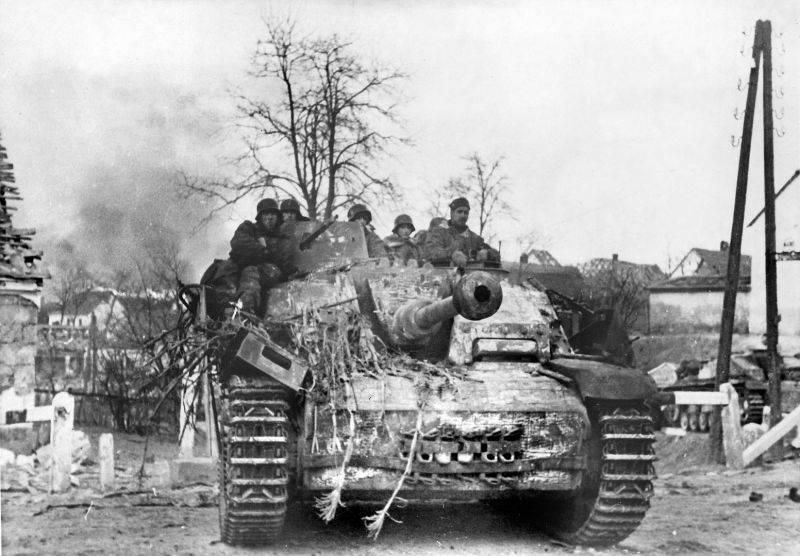
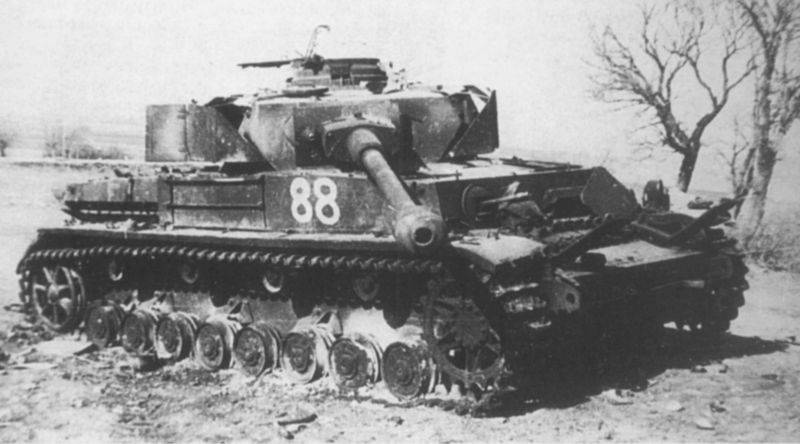
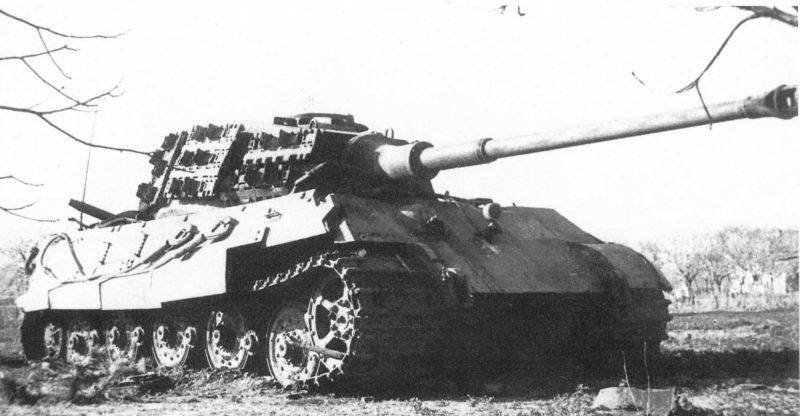
German Command Plans
The order to conduct an offensive in Western Hungary was given by Adolf Hitler. In mid-January 1945, the German Headquarters ordered the deployment of the 6th SS Panzer Army from the Western Front to Hungary. Also, troops for the upcoming operation were transferred from Italy. The Führer believed that the last oil resources located in Hungary were of paramount importance to the Reich. At that time, this region accounted for up to 80% of all German oil production. Without these sources it was impossible to continue the war for a long time, there was no fuel left for aviation and armored vehicles. Under the control of the Third Reich there were only two oil sources - in Zittersdorf (Austria) and in the area of Lake Balaton (Hungary). Therefore, the high command decided to transfer the last large mobile units to Hungary, and not to Pomerania, where they originally planned to transfer tanks from the West. With the success of the offensive, the Nazis hoped to push the Russians over the Danube, restore the defensive line along this river, eliminate the threat of the enemy reaching the borders of Southern Germany, and defeat in Austria and Czechoslovakia. A major victory on the southern flank of the strategic front could tie the forces of the Red Army and postpone the strike on Berlin.
As a result, Hitler's command still attached paramount importance to the retention of Hungary. The Hungarian strategic foothold was necessary for the defense of Czechoslovakia, Austria and southern Germany. Here were the last sources of oil and oil refineries, without the production of which the Air Force and mobile units could not fight. Austria was also important as a powerful industrial region (steel, engineering, automotive and military industries). Also, these areas were suppliers of soldiers for the army. Therefore, Hitler demanded at all costs to keep West Hungary and Austria.
The Germans prepared a plan for Operation Spring Awakening. The Nazis planned to inflict three dissecting strikes. The main blow from the Velenz area and the northeastern part of Lake Balaton was dealt by the 6th SS Panzer Army Joseph Dietrich and the 6th Field Army Balck. The same group included the 3rd Hungarian army of Hezleni. In some areas, the concentration of tanks and self-propelled guns reached 50-70 vehicles per 1 km. The Germans were about to break through to the Danube in the Dunaföldvar area. The Germans planned a second strike south of Lake Balaton in the direction of Kaposvar. Here the troops of the 2nd Panzer Army Maximilian de Angelis attacked. The Nazis struck the third blow from the Donji-Mikholyats region to the north, to Pecs and to Mohacs. It was applied by the 91st Army Corps from the Army Group E (fought in the Balkans). The troops of the 2nd Panzer Army and the 91st Corps were to break through to meet the 6th SS Panzer Army.
As a result, three powerful blows were supposed to destroy the front of the 3rd UV and destroy the Soviet military formations in Hungary. After the Wehrmacht broke through to the Danube, part of the strike force was to turn north and liberate the Hungarian capital, part of the forces to develop an offensive to the south. This led to the encirclement and defeat of the main forces of the 3rd UV, the creation of a large gap in the Russian front, the restoration of the defensive line along the Danube and the stabilization of the entire southern flank of the Eastern Front. After the success of Operation Spring Awakening, the Nazis could strike the 3rd flank with a blow to the left flank. This completely stabilized the situation on the southern section of the Soviet-German front and allowed the transfer of tank formations to defend Berlin.
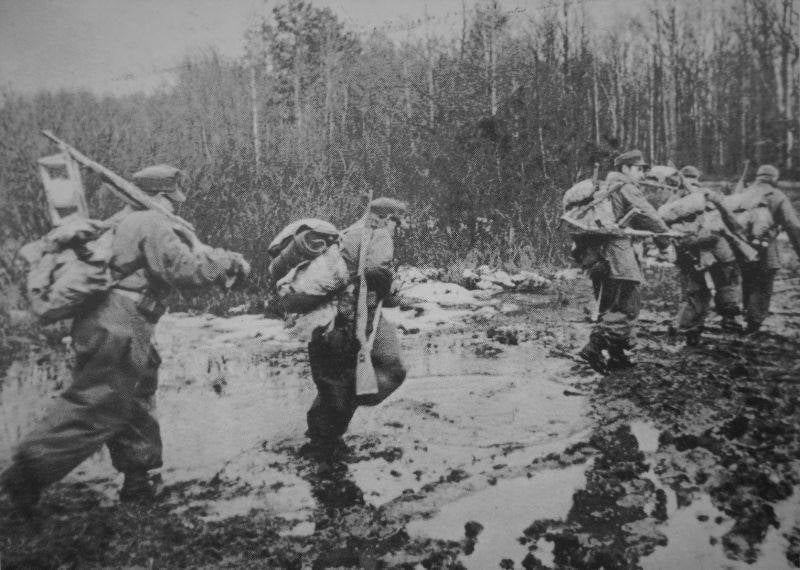
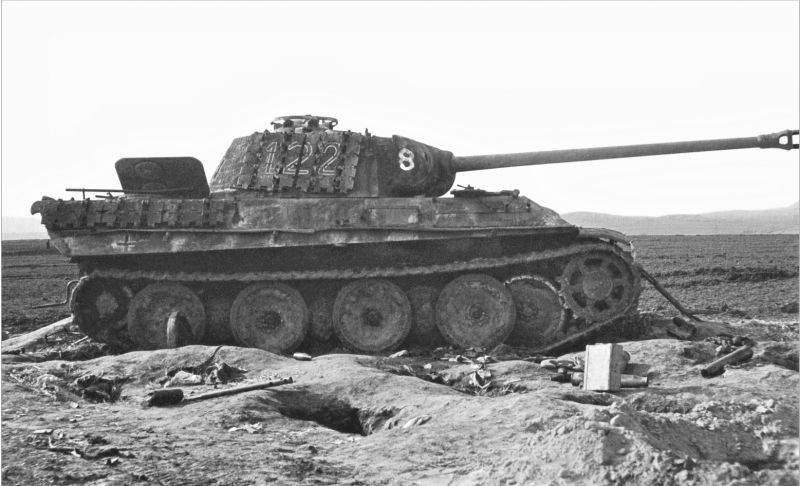
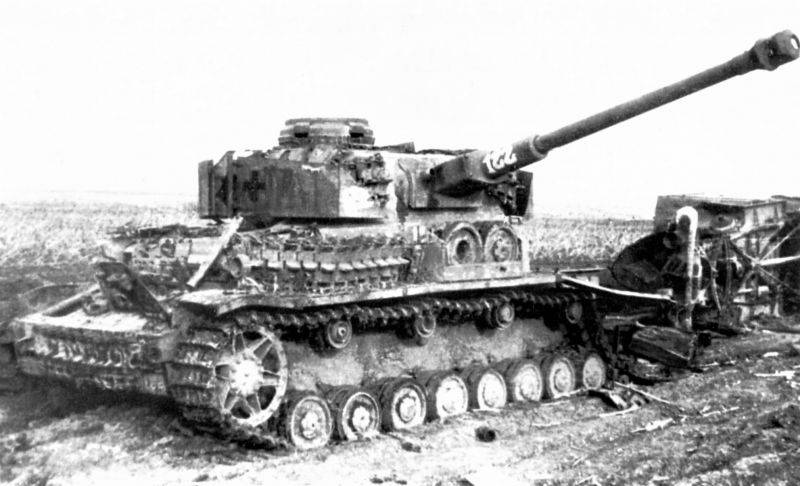
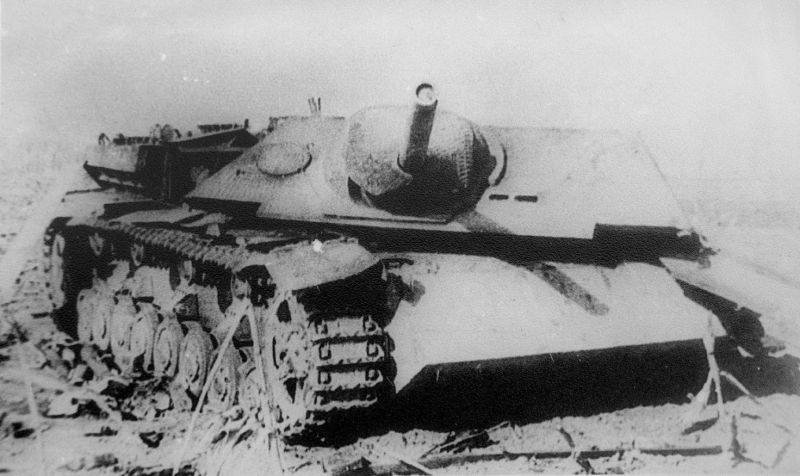
The forces of the parties
The front of Tolbukhin included: the 4th Guards, 26th, 27th and 57th armies.
The front forces totaled 40 rifle and cavalry divisions, 6 Bulgarian infantry divisions, 1 fortified area, 2 tank and 1 mechanized corps. Plus the 17th Air Army and part of the forces of the 5th Air Army. In total, more than 400 thousand people, about 7 thousand guns and mortars, 400 tanks and self-propelled guns, about 1 thousand aircraft.
Our forces were opposed by Army Group South under the command of Otto Wöhler: 6th SS Panzer Army, Balk Army Group (6th Field Army, remnants of the 1st and 3rd Hungarian armies), 2nd Panzer Army; part of the forces of Army Group "E". From the air, the Germans supported the 4th Air Fleet and the Hungarian Air Force. These troops totaled 31 divisions (including 11 tank), 5 battle groups and 1 motorized brigade. In total, more than 430 thousand people, more than 5,6 thousand guns and mortars, about 900 tanks and self-propelled guns, 900 armored personnel carriers and 850 combat aircraft. That is, the Hitlerites had a slight advantage in manpower, and the Soviet troops had an advantage in artillery and aircraft. In the main striking force - in armored vehicles, the Germans had a double superiority. It was precisely on the powerful armored fist that the Hitler generals had the highest hopes.
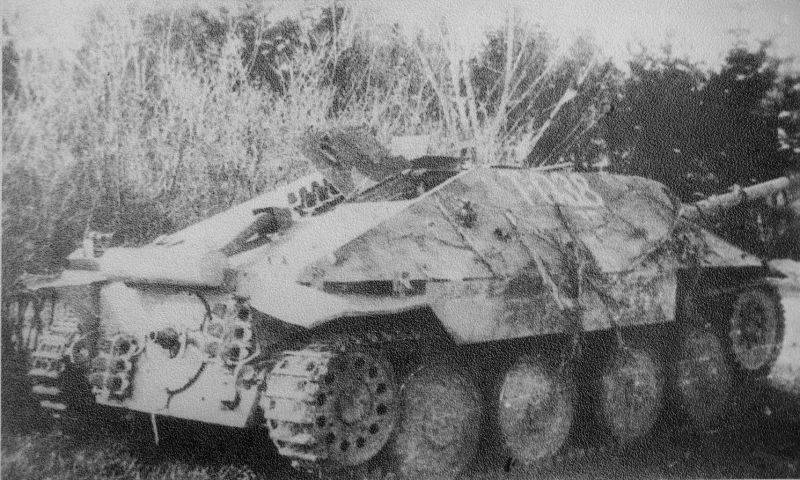
"Forest Devil"
March 6, 1945 German troops went on the offensive. The first attacks were carried out on the southern flank. At night, the positions of the Bulgarian and Yugoslav troops were attacked. In the morning they hit the 57th Army. On the site of the Sharokhin army, the Nazis conducted artillery preparation for an hour, then went on the offensive and were able to wedge themselves into our defense at the cost of heavy losses. The command of the army brought into battle second-tier troops, reserves, including artillery, and was able to stop the further advancement of the enemy. As a result, in the southern section, the Nazis advanced only 6-8 kilometers.
On the defense site of the Bulgarian and Yugoslav armies, the Nazis were able to force Drava and seized two bridgeheads. But further German forces failed to break through to Pech and Mohach. The Soviet command transferred the 133rd Rifle Corps and additional artillery to help the Slav brothers. The Soviet aircraft intensified their actions. As a result, the front stabilized. The Slavs, with the support of the Red Army, repelled an enemy strike, and then launched a counterattack. Enemy bridgeheads were eliminated. The fighting in this direction continued until March 22. As a result, the operation of the German army (Forest Devil) in the area south of Lake Balaton did not lead to success.
"Spring Awakening"
At 8 hours, after a 40-minute artillery preparation, the troops of the 30th Tank and 6th Field Armies went on the attack in the northern sector. The battle immediately took on a fierce character. The Germans actively used their advantage in tanks. Used heavy tanks "Tiger-6" and medium tanks "Panther". By the end of the day, the Nazis advanced 2 km, took the Sheregeyesh stronghold. The Soviet command, to strengthen the defense, began to bring the 4th tank corps into battle. Also, the 18rd Airborne Division of the 3th Guards Rifle Corps from the 35th Army began to be transferred to the dangerous area. On the same day, stubborn battles went on in the defense zone of the 27st Guards Fortified Region from the 1th Guards Army.
On March 7, 1945, German troops with the active support of aviation resumed attacks. A particularly dangerous situation developed in the defense zone of the 26th Army. Here the Germans gathered an armored fist of 200 tanks and self-propelled guns. The Nazis constantly changed the direction of attacks, searched for weak spots in the enemy’s defense. The Soviet command transferred anti-tank reserves here. The 26th Hagen Army was strengthened by the 5th Guards Cavalry Corps and self-propelled gun brigade. Also, to strengthen the battle formations of the armies of the first echelon, the troops of the 27th army began to put forward defenses on the second lane. In addition, a large role in repelling the enemy’s armored masses was played by the strong blows of the Soviet 17th Air Army. As a result, in two days of fierce fighting, the Germans were able to break into the Soviet defense by only 4-7 km. The Nazis could not break through the tactical defense zone of the Soviet army. The timely determination of the direction of the main attack, the creation of a strong defense, the stubborn and skillful resistance of our troops prevented the enemy from breaking through.
On March 8, Hitler's command threw the main forces into battle. The Germans were still looking for weak spots in the defense, throwing large masses of tanks into battle. 250 tanks and assault guns marched forward in the direction of the main strike. Trying to reduce the effectiveness of artillery and enemy aircraft, the Germans attacked at night. On March 9, the Nazis threw new forces into battle, building up the power of the shock group. Up to 320 military vehicles piled on the Hagen army. The German army was able to gnaw through the main and second defense lines of our troops and wedged 10-24 km in the main direction. However, the Nazis had not yet broken through the rear army and front line of defense. At the same time, the main forces were already thrown into the battle, and they suffered heavy losses in manpower and equipment. Since March 10, the 5th Air Army, which supported the troops of the 2nd UV, began to participate in repelling the advance of Army Group South. In addition, the 3rd UF had at its disposal the 9th Guards Army (transferred by order of the Stavka), which was deployed southeast of Budapest and could join the battle if the situation worsened. Also, the command of the 2nd UV began to transfer troops of the 6th Guards Tank Army to the area of the Hungarian capital. That is, they had large reserves in case of an enemy breakthrough.
On March 10, the Germans brought their armored vehicles in the area between the lakes Velenets and Balaton to 450 tanks and self-propelled guns. Fierce fighting continued. On March 14, the German command threw the last reserve into the battle - the 6th Panzer Division. Two days of the position of the 27th Soviet Army, Trofimenko stormed over 300 German tanks and self-propelled guns. Hitlerites wedged into our defense up to 30 km. This was the last success. The combat power of the German divisions was exhausted, the equipment was knocked out. There were no new reserves for the development of the offensive.
Thus, the German armored fist never penetrated the Soviet defense, although the situation was difficult. By the end of March 15, many German units, including the selected SS men, had lost their fighting spirit, had broken down, and began to refuse to attack. The offensive of the German troops stifled. Under the cover of mobile units, which were still fighting fiercely, the Nazis began to retreat to their original positions and went on the defensive. The Führer was furious, but nothing could be done. Hitler ordered the personnel of the SS tank army to tear off the honorary sleeve bands from the uniform.
The last major offensive of the Wehrmacht in World War II ended in defeat. The Germans could not break through to the Danube and defeat the main forces of the Tolbukhin front. Russian troops exhausted the enemy with stubborn defense, actively used artillery and aircraft. A great role was played by Soviet intelligence, in time to discover the preparation of the enemy for the offensive. In another case, the Germans could achieve short-term success and cause great damage to our troops. During the Battle of Balaton, the Wehrmacht lost about 40 thousand people (our losses - about 33 thousand people), about 500 tanks and self-propelled guns, about 200 aircraft.
The fighting spirit of the Wehrmacht and selected parts of the SS was broken. The fighting forces of the Nazis in Western Hungary were seriously weakened. SS tank divisions lost most of their combat vehicles. Almost without a pause, on March 16, 1945, troops of the 2nd and 3rd UV began the Vienna offensive operation.
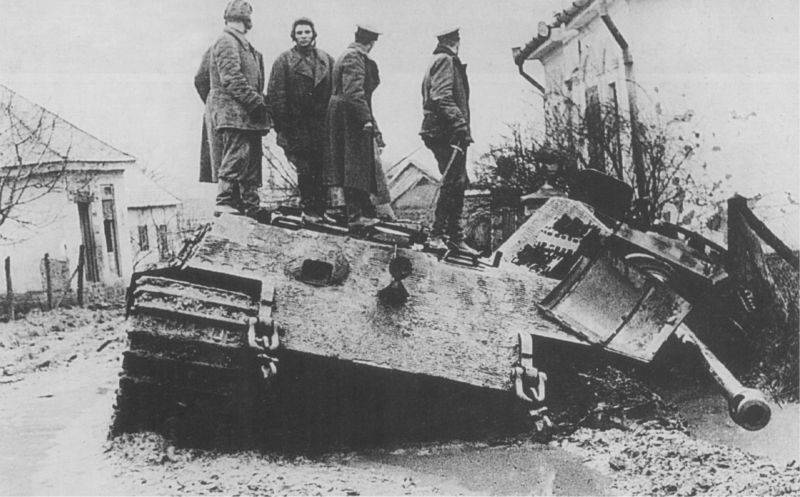
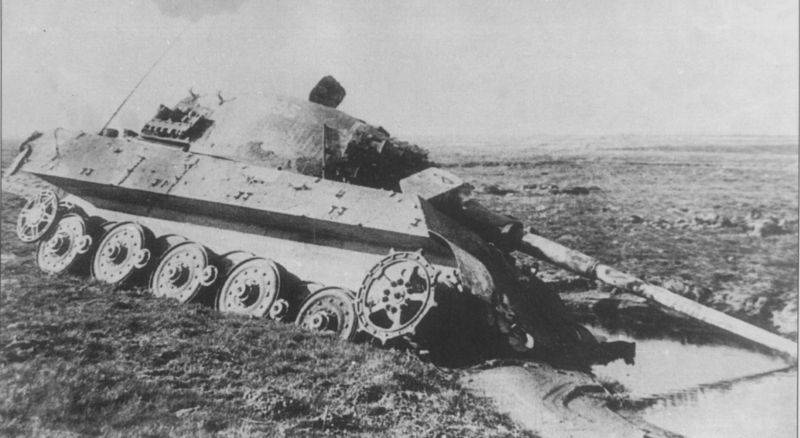
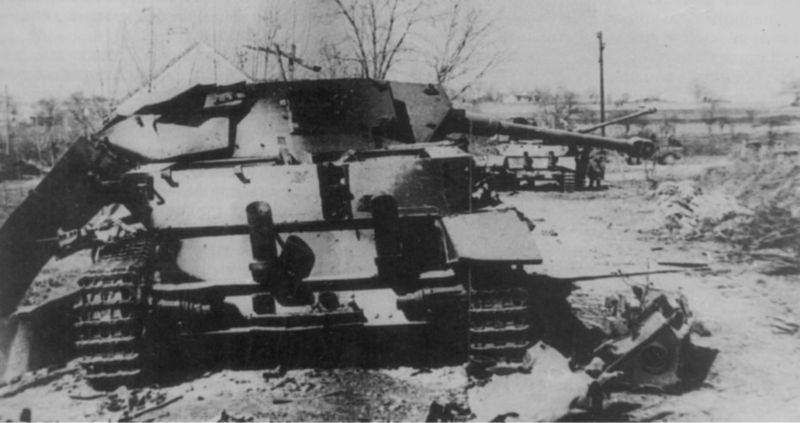
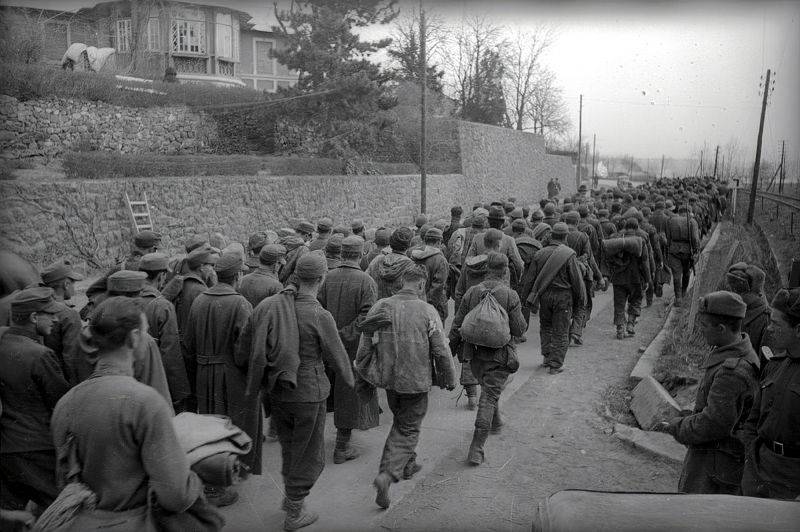
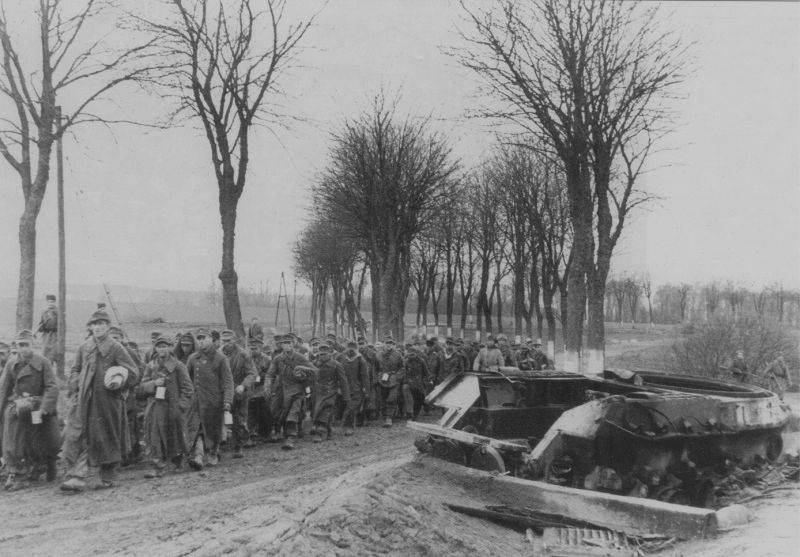
- Alexander Samsonov
- http://waralbum.ru/
- The agony of the Third Reich
The Agony of the Third Reich. 75 years of the Vistula-Oder operation
The assault on the East Prussian fortress of the Reich
How Soviet troops liberated Warsaw
How Stalin created the foundations of a new world
The fierce battle for the Slavic Pomerania
75 years ago, Soviet troops stormed Budapest
The stubborn battle for Silesia
The Miracle of Breslau. How they stormed Hitler’s last fortress
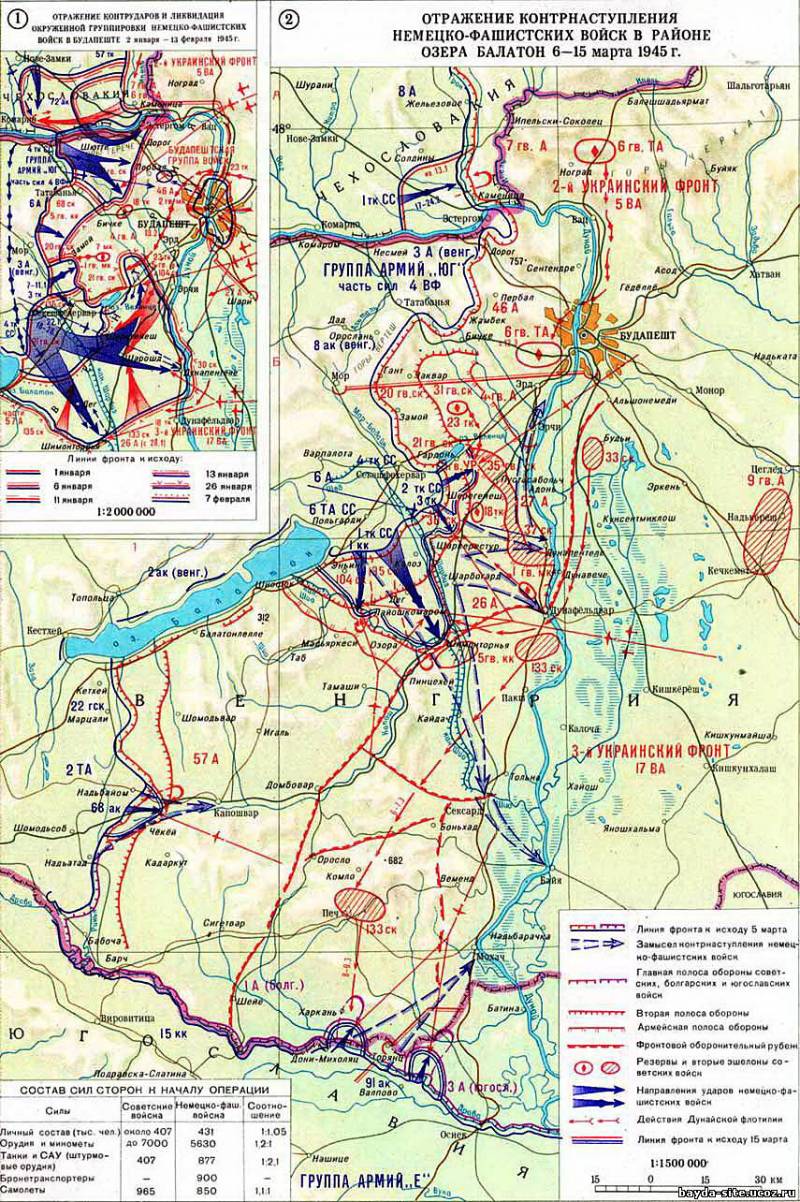
Information